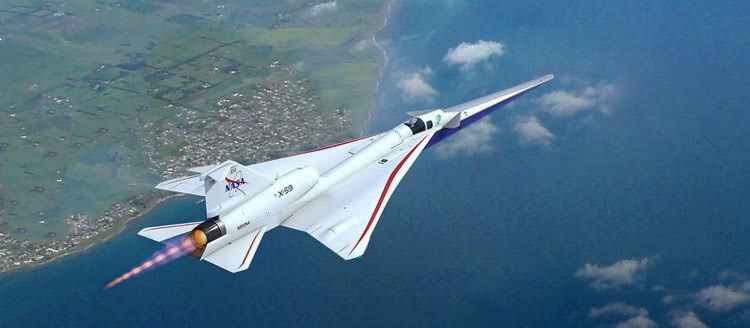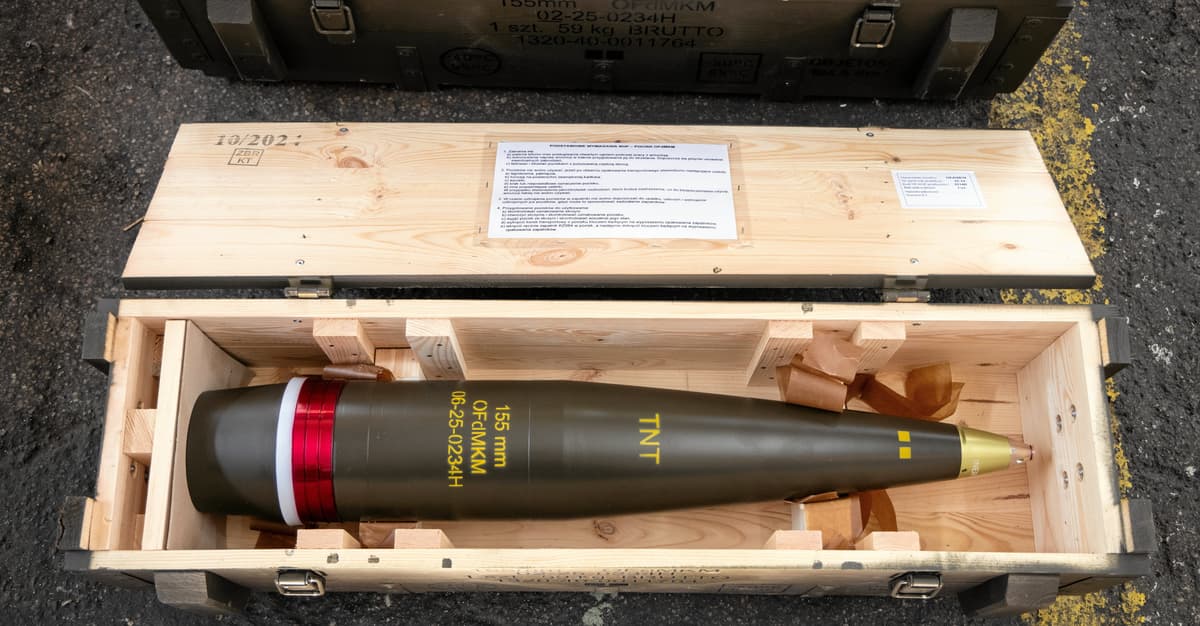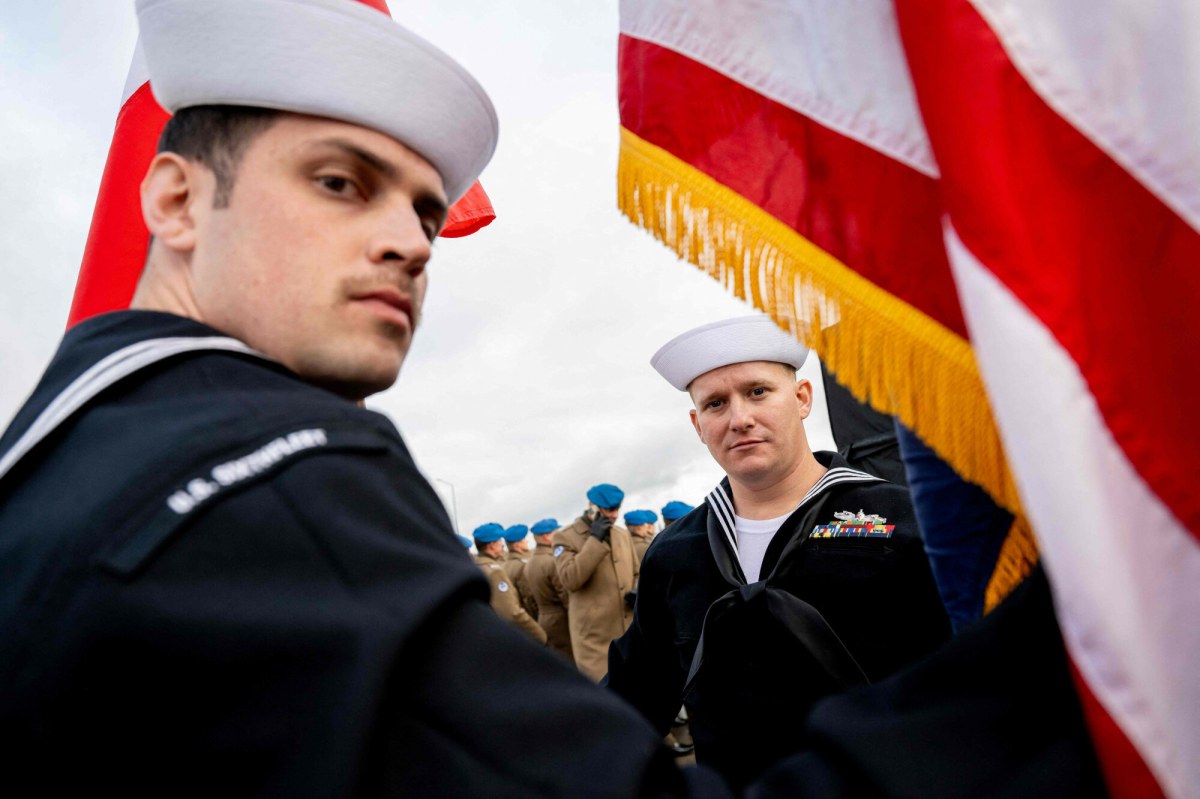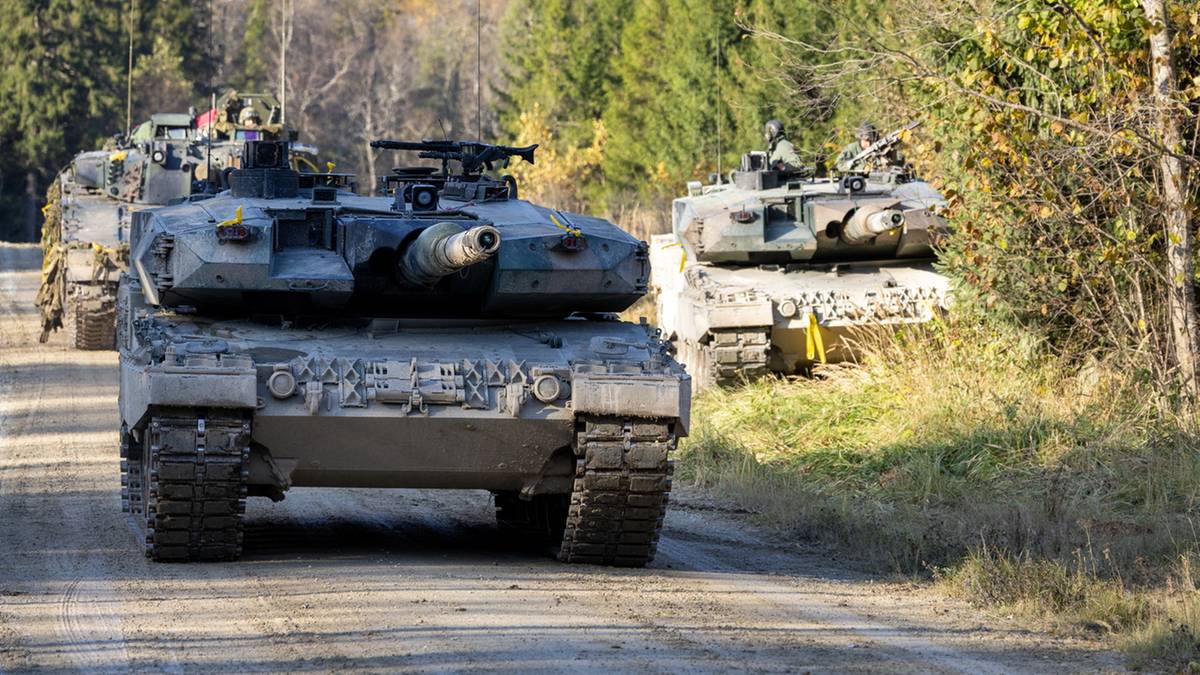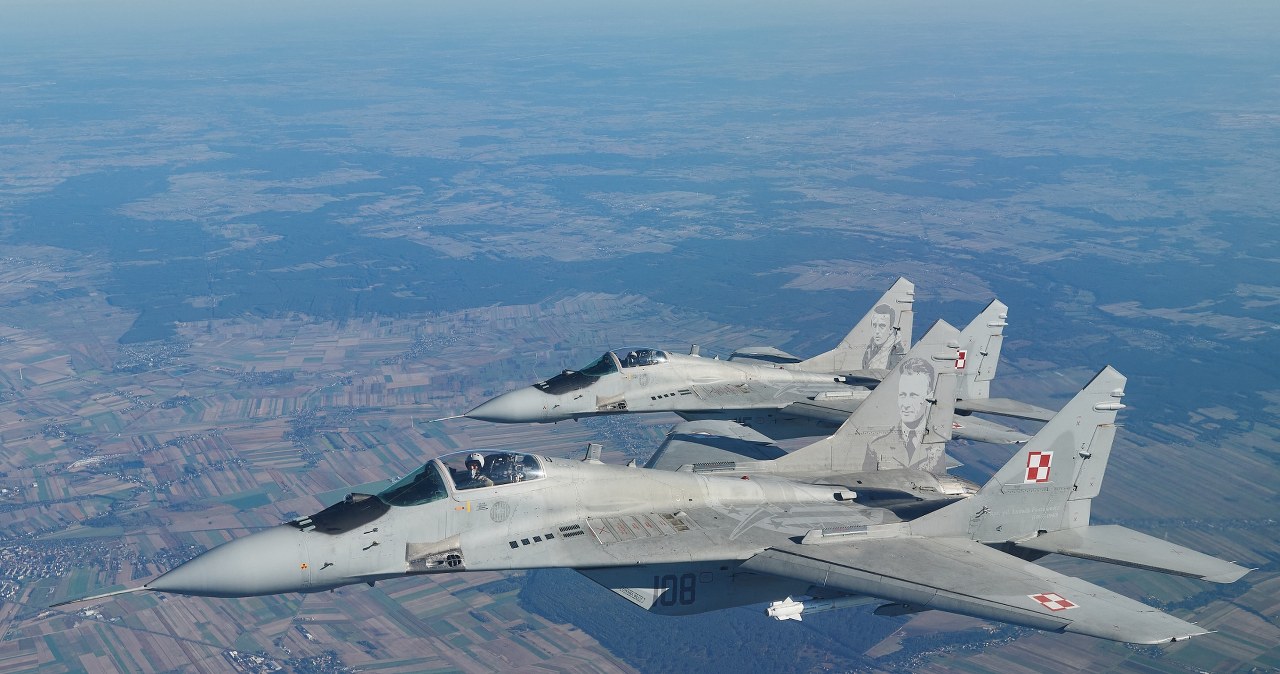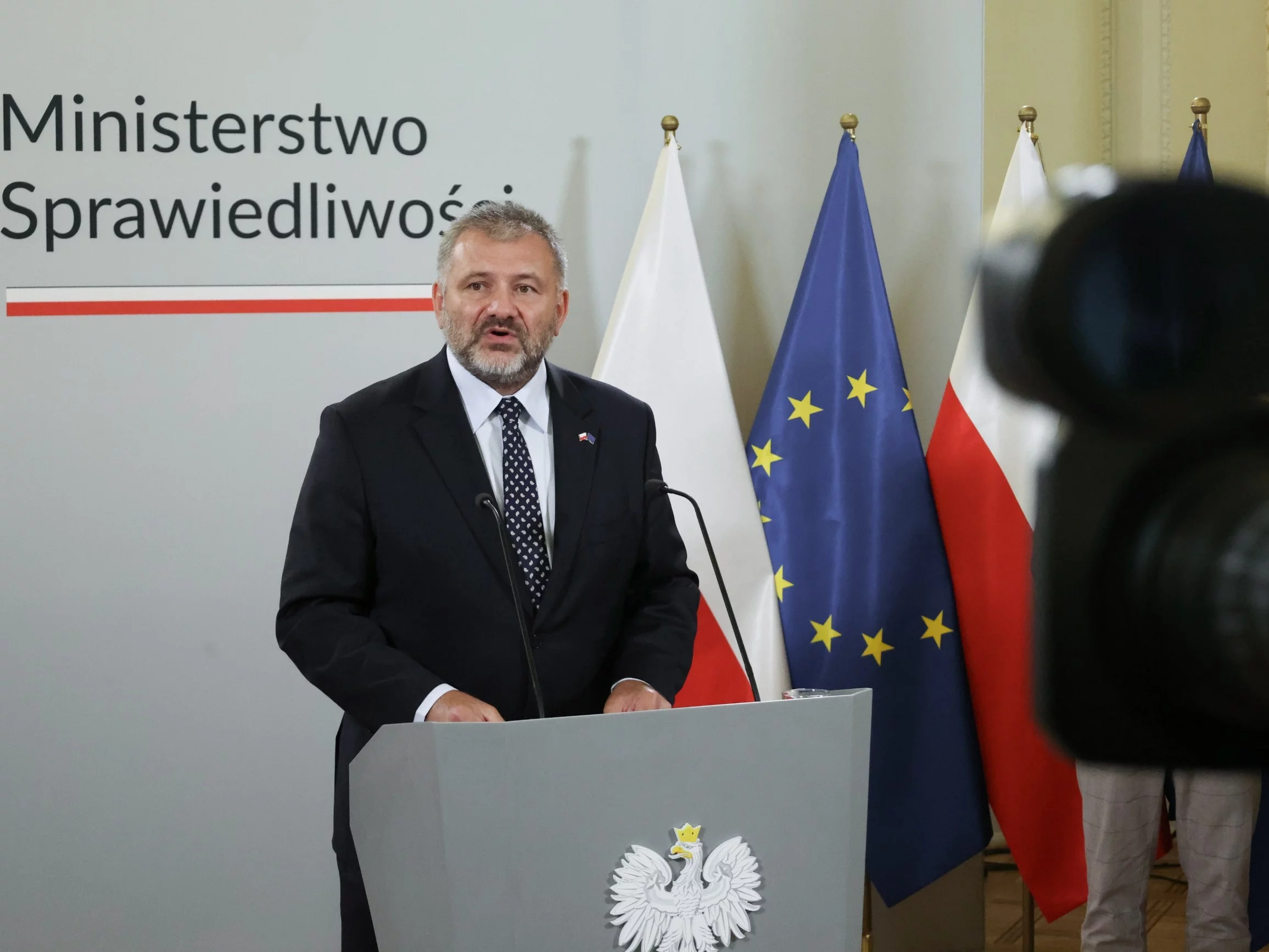At the outset of this study, I thank the commanders:Tomasz WitkiewiczandMirosław Ogrodniczukfor your time to read the text, correcting the names and giving guidanceI encourage everyone to watch both gentlemen's twitter accounts.
Loud information about the sinking by Ukrainians of the Russian flagship of the Black Sea Fleet – the cruiser “Moscow” – has not only become a large propaganda success of defenders, but besides fuel for people skeptically referring to the thought of modernization of the Polish Navy. In particular, those who criticise the “Meter” programme concerning the acquisition of multitasking frigates for MW.
The "Moscow" subject is truly rather marginal and almost meaningless for defining tasks for the Polish fleet. However, it is worth noting that those little patient readers or listeners – who frequently halt reading the material on the header or the first paragraph – have a chance to realize that it is impossible to compare the individual sinking in strictly defined conditions (for Ukrainians) not upgraded since 1979 of the ship with the possible of modern frigates, whose radars and systems can track respective 100 (not a fewer "Moscow") incoming targets at erstwhile and mark respective twelve (not several) anti-missiles of various types. Nevertheless, even with the systems that the Russian cruiser had, he would have the chance to defend against the Ukrainian attack. If only these systems were on and ready to operate. Meanwhile, based on images taken after the hit and just before the sinking of the flagship of the Black Sea Fleet, it appears that his defence systems were inactive! In another words, from the fact that the Russians fight in Ukraine in a fatal and frequently incompetent way, 1 cannot conclude that we request ships, aircraft, helicopters, tanks, combat vehicles, artillery or even infantry (or possibly even an army?).
For permanent but besides fresh readers who value longer studies, I have traditionally prepared a ‘small’ analysis.
Tasks for the Navy during peace and defensive action under the war threshold
The Navy thus differs from the Land Army, for example, that the spectrum of tasks imposed on it during peace time may well exceed the number of tasks it would gotta carry out during the war. In another words, in peacetime, the fleet “makes money.” Not only does it care about the safety of coasts and waterways, but it can easy put force on its opponent during the alleged "hybrid war" and be an crucial deterrent element. It is worth mentioning that erstwhile the French did not like Turkey's policy (vide Disputes with Greece, engagement in Libya), it was the French fleet that demonstrated the discontent of the Paris authorities by operating in the east Mediterranean. In addition, fleet ships are excellent political tools, frequently a political currency. This is evident especially in examples US Navy is Royal Navy. The British and the Americans are constantly sending their own ships to even the most distant parts of the planet to show commitment and convince possible allies and partners. Of course, these examples concern the world's largest and strongest fleets. Does Poland truly have specified ambitions and opportunities that require the construction of modern Navy?
Of course it is, although the needs of our country are fortunately much lower erstwhile it comes to naval forces than in the US, the United Kingdom, France or even Germany. Germany, which constantly modernises its own fleet, brings fresh ships (including frigates) into service and sends them to, for example, the Pacific or the Red Sea or the arabian Gulf.
Baltic Sea – a catchment area of Polish interests
In order to find tasks for the Polish Navy, first mention should be made Polish interests related to the maritime domain. And unfortunately, you gotta come out of full trivialism. Poland has access to the Baltic Sea and its coast is as long as 770 km (counting the Vistula and Z. Szczeciński Basin). Thanks to this, our country is embedded in a global network of maritime routes, which are the most important, cheapest and most throughput communication network on the globe (approximately 85% of all transport in the planet is carried out by sea). Almost free. Infrastructure (sea) does not in rule destruct (but take care of artificial channels, etc.). On the open sea, unlike roads or railway tracks, there may be an almost infinite number of transport units, in this case ships flowing in different directions. In another words, the volume of transport is limited only by the quantity and capacity of transport units and possibly the capacity of sea traffic limiting points, i.e. channels. It is worth recalling the example I have repeatedly cited. The largest floating container ships carry more than 20,000 containers on board, while the train can carry about 50 wagons in containers on average. It doesn't take much imagination to realize that it would be hard to load, transport and unload a warehouse that extends hundreds of kilometres (if it was to compete with cargo with ships). Let us remind you that thousands of container ships are sailing in the seas. Moreover, on land, in addition to means of transport, infrastructure needs to be invested (another road lanes, or railway lines). In another words, shipping is irreplaceable. Of course, the fact that 85% of goods in the planet are transported by sea does not mean that maritime transport is equally crucial for all. Although it is worth remembering that, for example, the Czechs took care of access to seaports, renting part of the waterfront in German Hamburg. How crucial is access to the sea for Poland?
Poland and maritime trade
Poland uses maritime routes utilizing its own ports. Mainly those located in Tricity (Gdynia/Gdansk) and Świnoujście and Szczecin. Polish ports are utilized for the handling of coal and coke, ores, cereals, oil and petroleum products and another products. Access to the Baltic Sea besides means that fish can be caught and processed, which must not be forgotten in the context of the upcoming problems in the agri-food marketplace (vide the effects of the war in Ukraine).
From 2005 to 2017 the value of Polish exports by sea has tripled. In 2005 goods worth $5.5 billion came out of Polish ports, while in 2017 it was already $15.8 billion (the value of all PL exports is about $220 billion). Import value via The Baltic besides rose from 3.4 billion dollars during this time. Up to 8.7 billion UAH. In 2005 full capacity net ships entering Polish ports amounted to nearly 52 million registered tonnes. In 2019 it was already 106 million. besides in 2020 (covid) the barrier of 100 million tonnes was exceeded. Port improvement is accelerating. The port in Gdańsk is under improvement and is already planned subsequent upgrades waterfronts. The aim is to accomplish yearly transhipments in Polish ports of 150 million tonnes, while Gdańsk can enter the 10 largest container ports in Europe (currently tranships about 50 million tonnes/year and is ranked 15).
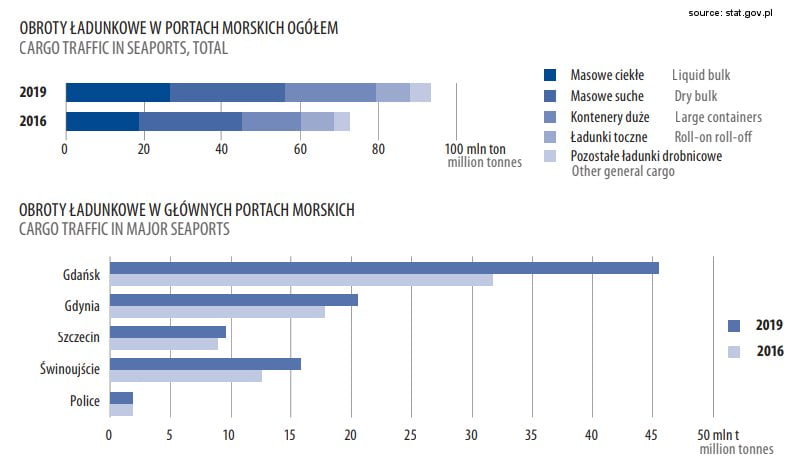
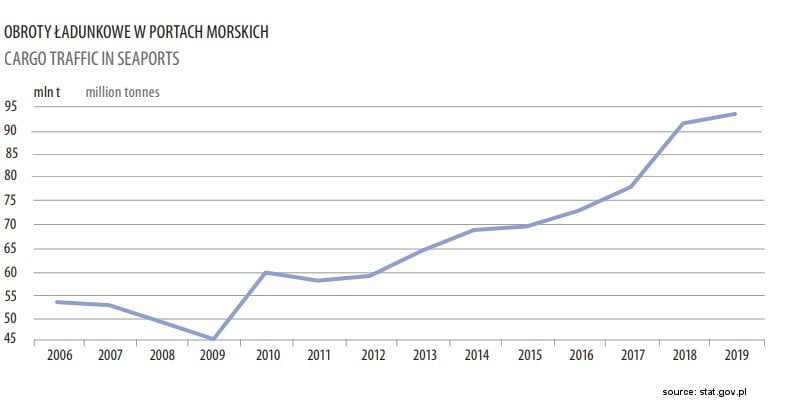
Of course, Polish ports have not served even 1/10 of the value of Polish abroad trade so far. However, this may change soon, and besides much more crucial is what Poland imports and will import by sea (not only by ships).
Building energy independence
The problem of Poland is that it is dependent on supplies of oil and gas from abroad. So far both gas and oil have been imported mainly from Russia through land pipelines. However, Poland has been reducing imports from Russia for years and expanding imports from another countries. At the same time, in the context of a full-scale invasion of Ukraine, a complete cut-off from Russian supplies is being considered. Only that the acquisition of energy resources from another sources requires port infrastructure and the usage of the maritime domain.
Poland has late owned a LNG terminal in Świnoujście, which allows for an yearly collection of 5 billion ml of liquefied gas from tankers. The terminal is in the process of expansion, which will increase capacity to up to 7.5 billion ml/year. In addition, it is planned to lease or acquisition a floating LNG terminal in the coming years, which would be stationed in the vicinity of Gdańsk.
In addition, a gas pipeline is built Baltic tube 10 billion ml of gas per year, of which 8,5 billion is reserved only for the needs of Poland, to be completed by December 2022. The gas pipeline is laid at the bottom of the Baltic Sea and runs from Denmark through global waters to the Polish coast, where in the area of Ochorze (near midway between Świnoujście and Kołobrzeg) it goes to shore to climb into the national gas pipeline network in Ploty (West Pomerania). In 2021 Poland She had to import a full of about 16 billion ml of gas. This leads to the conclusion that after completion of the ongoing investments we will be able to cover our needs, and thanks to the additional LNG terminal – Poland can take care of the "mountain".
Nor can we forget the investments of PGNiG in Norway, where Poland has purchased the rights to search for and operate offshore gas deposits, which will then be shipped through the Norwegian, North and Baltic Seas to Poland.
In the area of the intake of oil, Poland unfortunately has one, Gdańsk Naftoport, which can take about 40 million tonnes of natural material annually. By comparison in 2021, Poland imported a full of around 22 million tonnes of oil (of which little than 64% from Russia). At the same time, Liquid Fuel Stations in Gdynia port were expanded. In another words, we have the ability to become independent of the Russian Federation in this respect, but deliveries will should be carried out by sea, via the Gulf of Gdańsk. Furthermore, we cannot forget that Poland is engaged in oil extraction in the Baltic, where Polish drilling platforms are located. Although the production volume is comparatively low, the exploitation of these deposits is profitable and reduces to any degree the request for black gold imports. Of course, it should be remembered that if for any reason the transportation to the Polish Naftoport were stopped, then we could get oil via e.g. Germany. due to the fact that oil could be picked up in their Naftoprot, put it in the pipeline and then reverse it through the pipeline. To come to Poland. However, specified an operation assumes dependence on the consent of another countries or entities. At the same time, this is unlikely, due to the fact that the needs of the Germans are so large that in order to become independent of supplies from Russia, Berlin must benefit from the possible of Polish Naftoport in Gdańsk... In another words, if it weren't for Naftoport, it would be hard to get oil from another direction.
Other natural materials that will shortly require the usage of port infrastructure and access to maritime routes are coal and coke. The aim is to replace Russian and Ukrainian natural materials.
As if it were not enough, Poland is already a net importer of electricity. Our imports amounted to 10TWh (terawatt hours) while exports were 9TWh. Importantly, Poland supplements electricity shortages, among others, through a cable dragged over the bottom of the Baltic Sea from Sweden (SwePol link). The cable is stretched between Karlsham and Wierzbięcin (k. Słupska). Trade balance with Sweden For 2020, it amounted to 3.8 TWh in favour of Sweden, in another words, our imports from this country exceeded the above-mentioned value of our exports. Overall, for the years 2010-2020, net imports of energy from Sweden amounted to 25 TWh, which makes this the most crucial direction in terms of generating electricity from the outside.
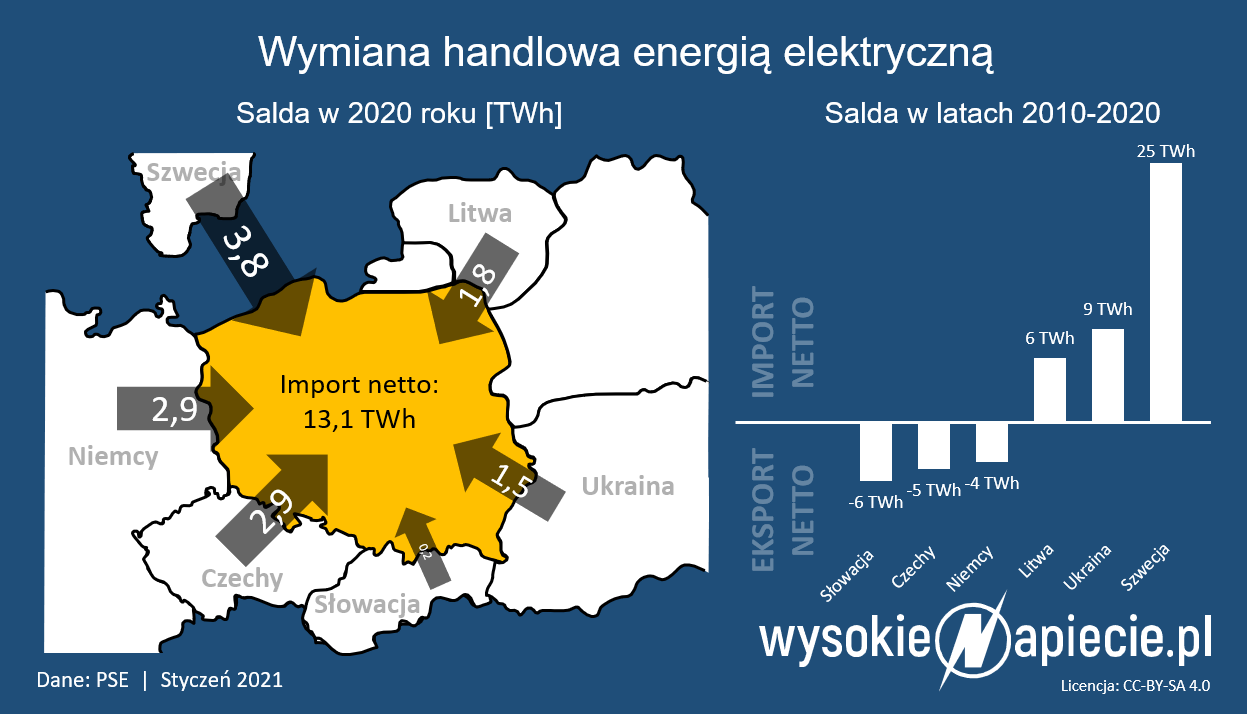
Of course, Poland besides has land-based gas, oil and energy connections. The problem is that this infrastructure links us to another gas, oil and electricity consumers. In another words,if the marketplace lacks natural materials (for all), it is without its own direct reception points (gas and kerosene, connecting to energy exporters i.e. Sweden) that we may not receive from the western or confederate direction essential for our gas, oil, electricity or even coal economy. In this respect, we are dependent on supply by the Baltic.
Furthermore, it should be remembered that the planned atomic power plant is besides to be close to the Polish coast. Like our oil warehouses and processing plants, which, for understandable reasons, have been built close to oilport.
Energy hub of the region
The possible afforded by Poland's access to the sea and the infrastructure accumulated (or built) on the coast was depicted by events of fresh days. Poland was visited by German Vice Chancellor Robert Habeck, who began negotiations on an agreement with Poland on oil supply to Germany by naphthoport in Gdansk. Germany has late reduced Russian oil imports and their dependence on this natural material has fallen from 35% (before a full-scale invasion into Ukraine) to 12% (present state). The last 12% is liable for the Schwedt refinery in Brandenburg (near the border with Poland), which processes the oil flowing through Poland via the “Friendship” pipeline (the Bestman). The refinery is controlled by Russian Rosnieft, but this can change quickly.

In order to usage the refinery's processing capacity, an adequate amount of alternate natural material must be delivered to it. The obstacle is that there is no another pipeline with adequate capacity that could compensate for supplies made by ‘Friendship’. This is where Poland can enter the game. For our kerosene port in Gdańsk is connected to the above mentioned pipeline with adequate capacity. In another words, thanks to naphthoport we could not only meet 100% of our own oil needs (about 22 million tonnes), but besides service Germany in the scope of 12% of their own request for black gold.
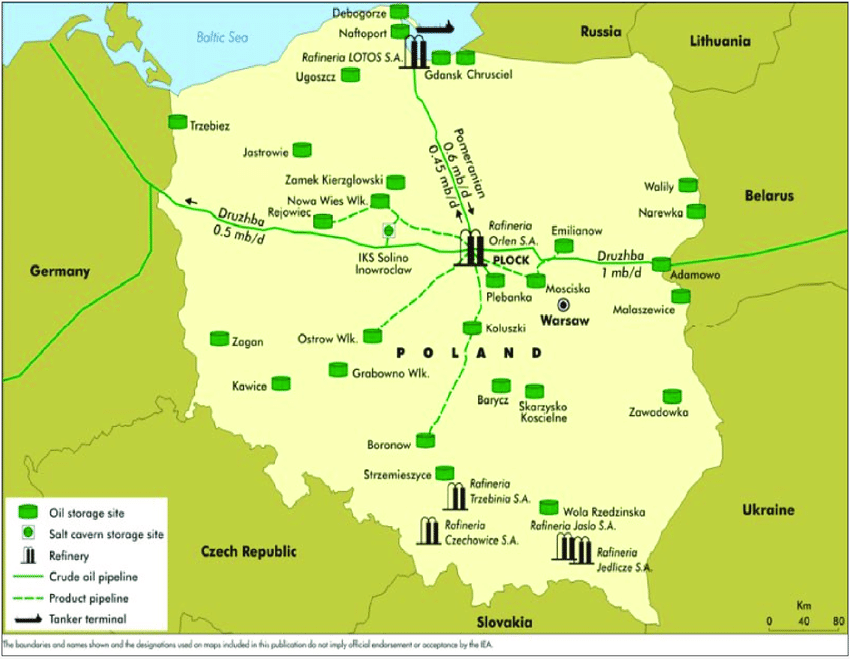
The Czech Prime Minister besides intends to visit Warsaw in order to resume his investment in the Stork II pipeline. With this combination, the Czechs could extract gas through the LNG terminal in Świnoujście.
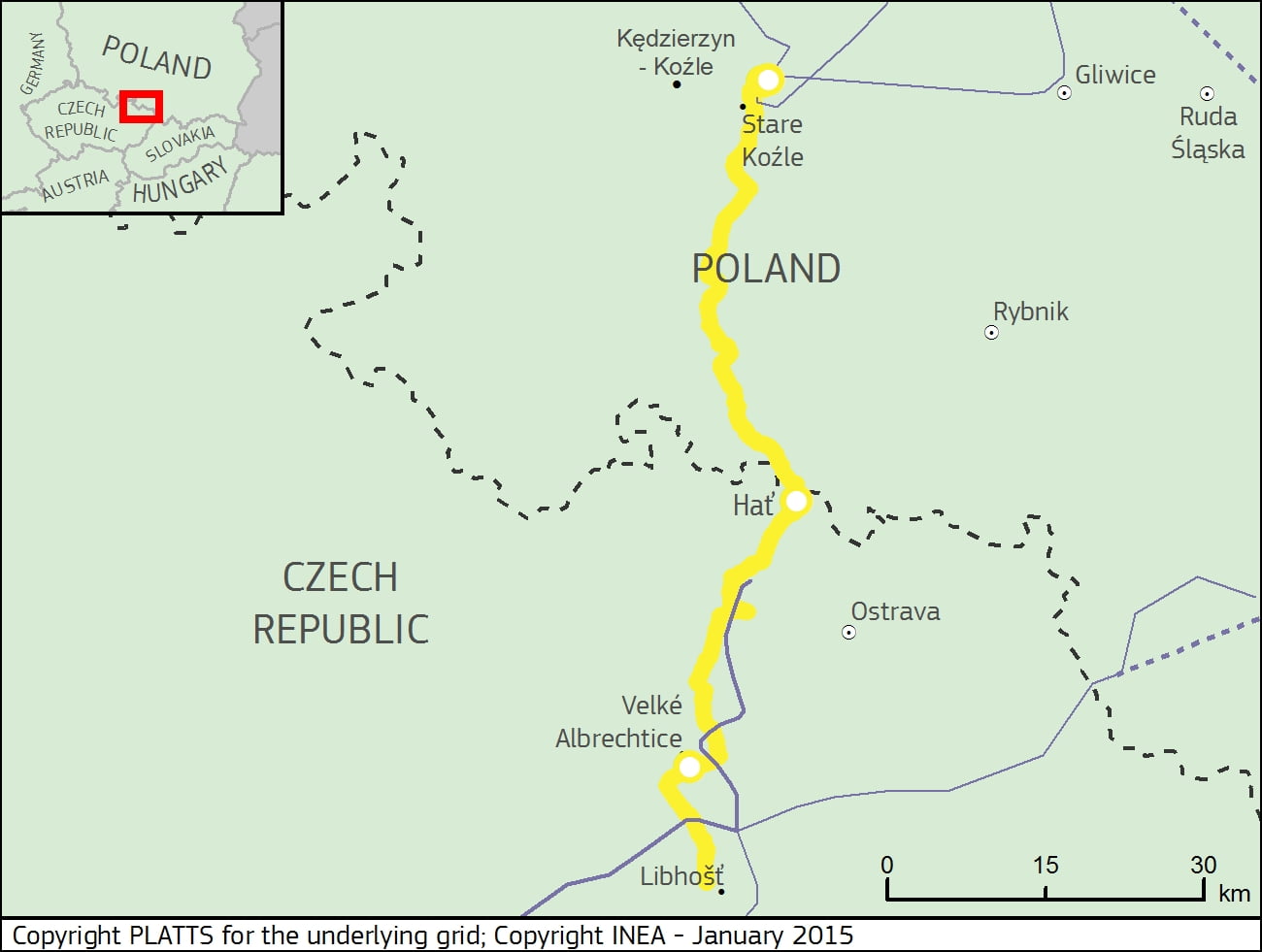
It should besides be remembered that the construction of the Polish-Lithuania gas interconnector has late been completed and a gas pipeline connection (GIPL) between Lithuania and Poland will be opened from 1 May 2022. This will give us access to gas from the LNG terminal in Klaipeda, but we will besides be able to re-export gas towards the Baltics and even Finland. For the connection described above is part of a larger investment to tie Lithuania, Latvia, Estonia and Finland to the European pipeline network – without Russia (thanks Balticconnector or a section moving over the bottom of the Gulf of Finland). Of course, Poland is to be the driver of this connection.
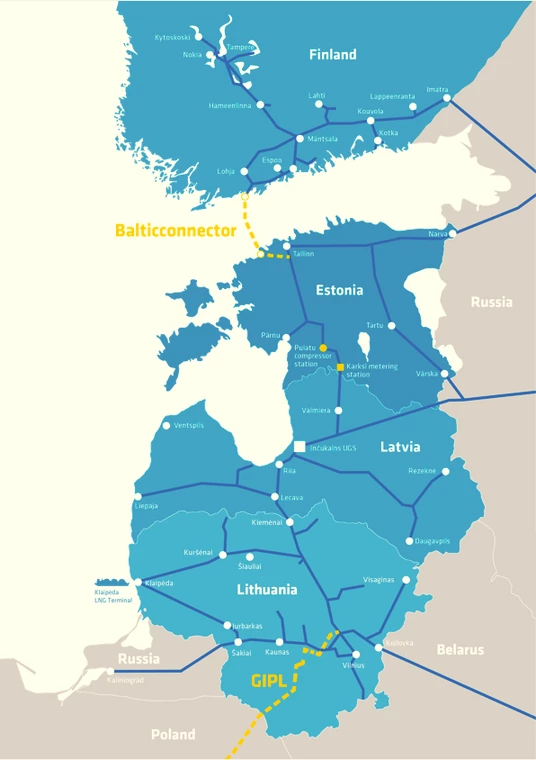
There is besides an investment in the North-South Corridor that will connect our network with Slovakia, Ukraine, Hungary, Austria, Slovenia and Croatia. A floating LNG terminal on the island of Krk (Terminal Hrvatska) was installed in the second country.

These investments show how crucial Polish access to the Baltic Sea can be not only for Poland itself, but besides for the full region.
Relations with Baltic neighbours
Polish interests at sea are not only economical and economic. The Polish borders number about 3.5 1000 km, of which the sea border is 440 km. It should be stressed that Poland is indirectly neighbouring the Baltic Sea with another countries located on the coasts of this reservoir. Sweden, but besides with Denmark, Finland, Latvia and Estonia – with which we have no land borders. In another words, the Baltic Sea is 1 large origin of interest for countries specified as Poland, Sweden, Denmark, Finland, Lithuania, Latvia, Estonia, Germany and the Russian Federation.
And so, The strength of the Polish state in the Baltic goes hand in hand with relations as well as negotiating positions with individual players who have access to the water. Furthermore, it should be remembered that the Armed Forces of the Republic of Poland should have the ability to effectively defend not only the land borders of the country, but besides the maritime borders. In this context, almost the full northern (sea) flank requires a different form of protection than the remainder of the border.
At the same time, it should not be forgotten that Poland's position in the Baltic could shortly correlate with that of the state in the full region of Central Europe – due to the transmission possible described above as regards energy resources. Poland can hand out cards in the region on this level, despite the fact that it does not own gas and oil in quantities that let export!
Polish Maritime Challenges in Peace
Therefore, having detailed economical interests of Poland on the Baltic Sea, 1 can be tempted to specify the challenges which the Polish state must present during peace. These are certainly:
- Security maritime transport (including supply of energy natural materials),
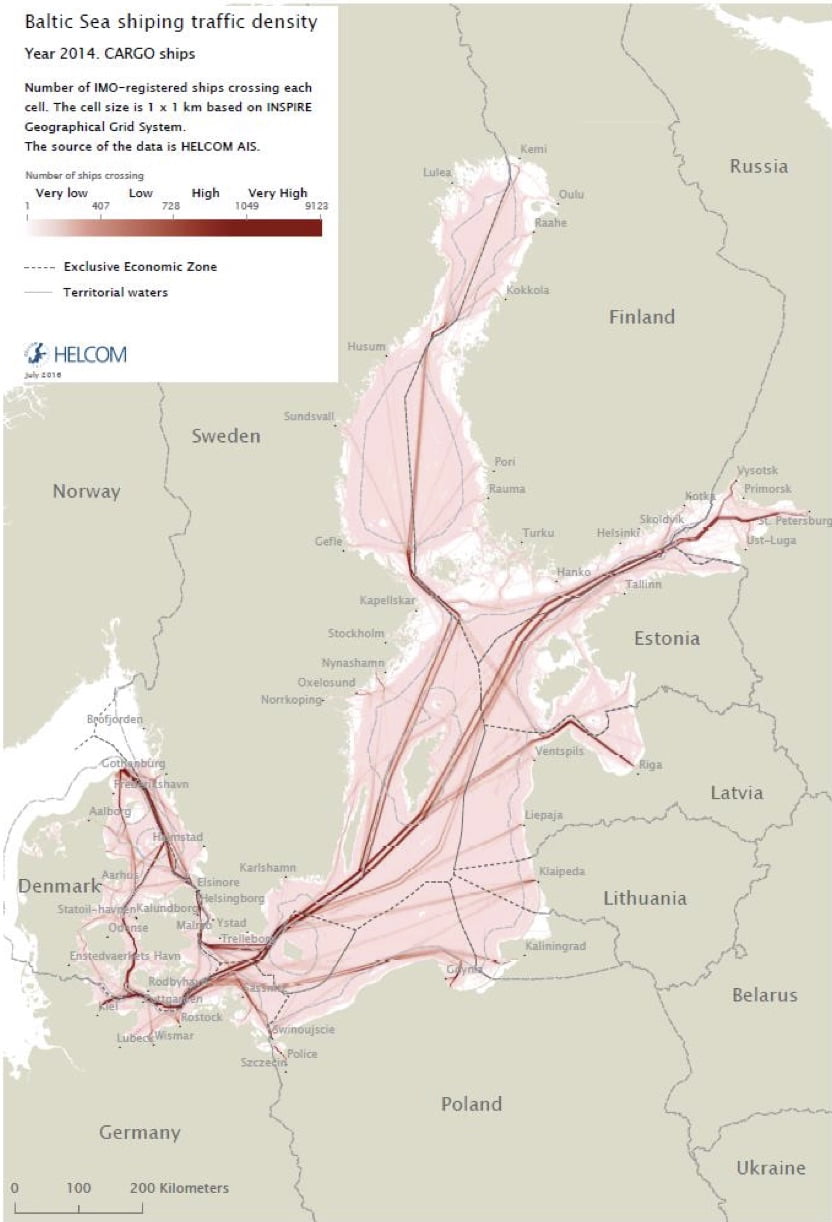
- Security offshore energy infrastructure (Baltic Pipe, SwePol link, wind farms, drilling platforms),
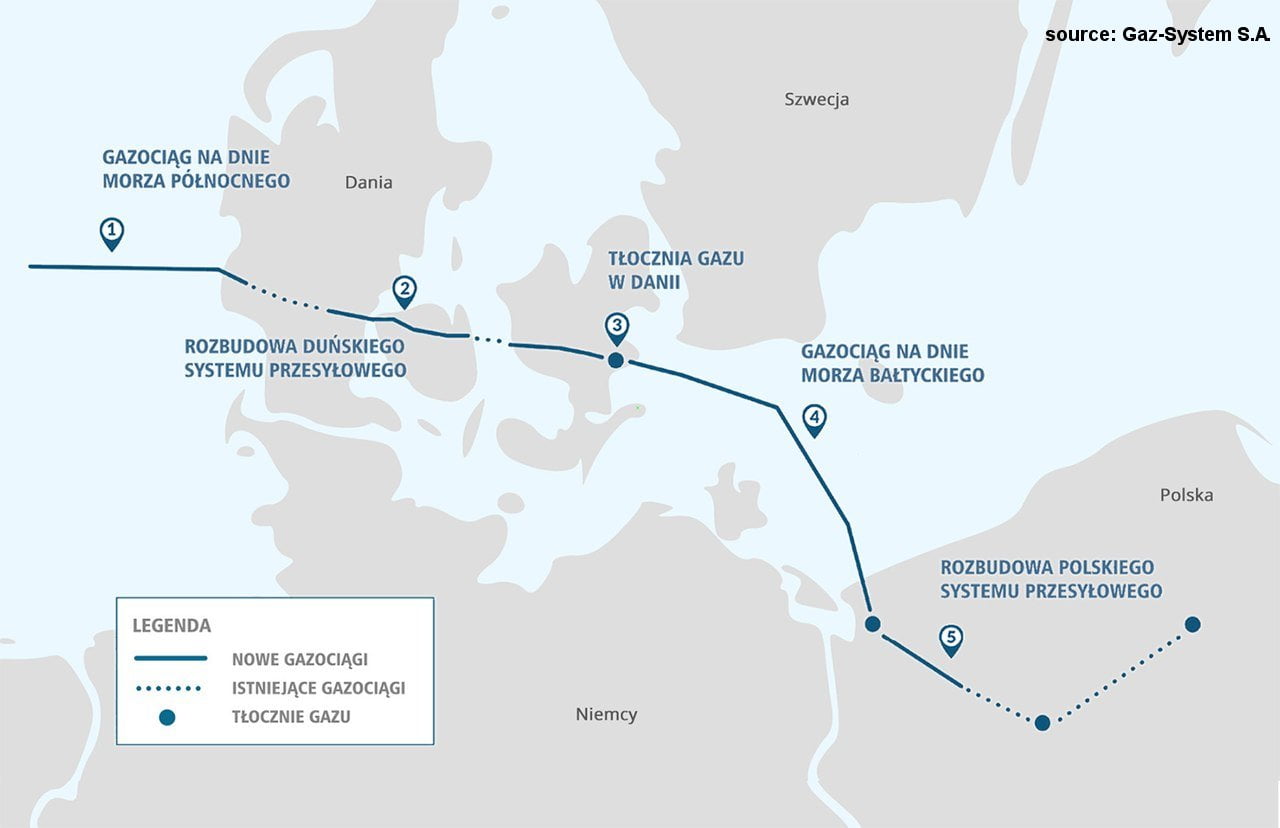 Baltic-Pipe gas pipeline thread
Baltic-Pipe gas pipeline thread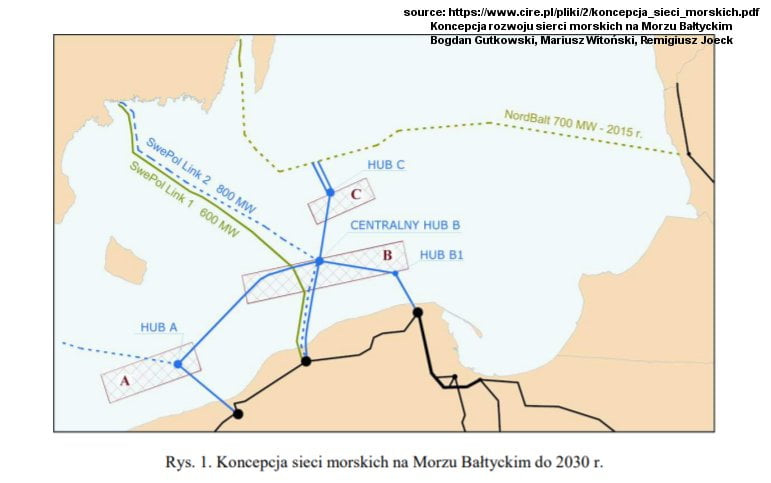 The concept of developing marine networks, including wind farms in the Baltic, which would be connected to the energy grid in the hubs (HUB A, B, B1 and C). It is planned to make an additional connection with Sweden and a cable allowing the export of energy to the west.
The concept of developing marine networks, including wind farms in the Baltic, which would be connected to the energy grid in the hubs (HUB A, B, B1 and C). It is planned to make an additional connection with Sweden and a cable allowing the export of energy to the west.- Security coastal energy infrastructure (Terminal LNG in Świnoujście, connection of Baltic tube to the pipeline network, Naftoport in Gdańsk, refinery in Gdańsk, gas and oil storage, transmission infrastructure, future atomic power plant and floating LNG terminal),
- Security port infrastructure (especially in Gdynia, Gdańsk, Szczecin and Świnoujście).


- Cooperation with Norway (and another stakeholders) in securing Norwegian gas deposits and mining and transport infrastructure in the Norwegian Sea and the North Sea.
Knowing these challenges, what tools do we request to meet these challenges? The answer to this question is that Without the appropriate capabilities of the Navy, no of these challenges can be met. Which will be justified in the further – more military – part of the study.
Order a book or ebook: "Third DEKADA. planet present and in 10 years". Find out what Poland and the planet can anticipate in the next decade. Welcome to the “shop” tab
Three DEKADA. planet present and in 10 years
What possible do we need?
In order to deal with these tasks, Poland needs tools that are suitable for guaranteeing safety on the indicated levels regardless of the circumstances and conditions (political and atmospheric). In another words, there are different safety measures for the same facilities, but each of them has its own specifications and limitations. Paraphrased, the screw can be screwed even with a fork, but much better suited for this will be the right screwdriver. Its usage will save unnecessary losses (minimum hazard of injury), time and energy. At the same time, not all screw can be screwed with a fork, so it would be optimal to get a screwdriver with different tips.
After specified an illustration it is worth considering each point separately.
- Sea transport.
Maritime transport control shall not take place from land. In fact, even the airline has very limited capabilities in this area. If we're going to control a ship, we're going to gotta take a ship up there and blow up the people who will board a controlled vessel.
If we're dealing with a ship (a war unit), it would be useful to have a... Stronger ship. It is hard to imagine that a boat or patrol boat could scare an enemy frigate or submarine from native territorial waters. This is not only about the difference in the size of ships, but above all the potential. If our unit has, for example, anti-ship missiles, but has a weak defence at the same time, then the crew of a possibly hostile ship, which has both its own means of damaging ships and an extended rocket defense, may not be inclined to follow instructions.
In this respect, the possession of suitable ships is irreplaceable, as they have a advanced autonomy and can (as opposed to, for example, aircraft, helicopters or smaller craft) e.g. for hours escort a suspicious unit until it ceases to pose a threat to e.g. its own infrastructure or taking place close sea transport.
Imagine a situation in which a suspicious ship undergoes a “failure” just above the place where Baltic tube is located, or flows alongside a tanker headed for 1 of the Polish ports. It would be impossible to shoot specified a unit without knowing precisely what is happening and whether the threat is real. However, the deficiency of consequence could lead to harm to the gas pipeline or to a "accident" tanker. In specified a situation, sending a ship to the site is necessary.
Let us besides imagine the script described above, which takes place during political tension, where diversionary action is possible under the war threshold. And alternatively of a civilian vessel (or at least pretending to be a civilian ship), a squad of enemy ships will be substituted, which, without violating global law, would make immense uncertainty on our side. Is the tanker safe? What happens if the opponent stops him, for example, for “inspection” purposes? Are we going to shoot from the shore? specified a reaction would put us as aggressors, which could have serious political consequences.
- Marine infrastructure.
In practice, it is impossible to safe maritime infrastructure (such as pipelines, power lines, drilling platforms) at a hard political minute without having to place a shield in the form of ships. The possible deployment of anti-aircraft and anti-shipping systems on the coast does not solve the problem. Bullets can only be fired after an evident act of war, otherwise we will be the aggressive organization and the 1 who started the war (and thus besides bears political risk). In another words, the opponent can easy fly or fly (e.g. a fighter). Demonstration of its advantage and the anticipation of "cut off" the country from energy supplies or energy resources at any time it chooses. In the meantime, the defender must be awake 24 hours a day to avoid missing the attack... specified tactics already in themselves increase the hazard of human mistake due to, for example, fatigue and constant readiness.
Of course, you can send fighters or smaller patrol ships to “capture” your opponent, but worse as this 1 will have much greater potential. A group of ships with anti-aircraft and anti-missile defenses supported by enemy aviation could successfully swim up and chess the Polish side – deterring or ignoring the weaker possible sent opposite. strategy autonomy is besides important. A 24-hour air patrol targeting the Baltic would absorb immense resources of Polish aviation, which would possibly gotta control air traffic and airspace in the east of the country at the same time. Meanwhile, smaller ships do not have the right autonomy to, for example, stay at sea for a fewer days close the hostile group of ships. Especially in hard weather conditions.
Of course, at the time of the possible attack of the enemy fleet, we could respond with missiles fired from the mainland (if we could track enemy units). However, the question should be asked whether, for example, the Russians would not be prepared to sacrifice any obsolete and rusting unit (as a goal-wabik) in order to deprive Poland of the anticipation of receiving gas (LNG terminals, pipelines), oil (naphthoport and warehouses) and electricity?
Just allowing the opponent to decision freely across the Baltic, he poses a hazard on the Polish side. And undoubtedly the failure of 1 ship or another – especially in the eyes of Kremlin decision-makers – is worth cutting off the possible enemy from strategical supply of natural materials without which the state will have a problem operating.
- Coastal infrastructure.
The issue of the safety of coastal infrastructure is similar. LNG ports, naphthoports, refineries, warehouses, etc. are susceptible to rocket attack. From land, as well as air and sea. It should be remembered that a rocket attack launched from a distance of respective 100 kilometres from 1 direction only (e.g. from the Kaliningrad Oblast) is easier to halt than 1 which was carried out from a distance e.g. 50 km from the mark by ships or enemy fighters attacking from an additional northern direction. The time to respond would be much shorter. mark defence is much harder. Especially that if the opponent could carry out an attack both from land (east) and sea (north) simultaneously. At that time, care should be taken to guarantee adequate radar coverage of the protected facilities – which entails higher costs (the radars around the Patriots have not yet been produced and there will inactive not be many). The problem of radar and the alleged dead radar region will be addressed further, but it should be signalled now that good radar deployed on a moving ship can see the threat much faster. Meanwhile, land-based radar has a much larger dead region (a narrower angle of observation), while at the same time the positions of better and larger radars are stationary. If we want to decision the radar, then it should be folded (so it will be inactive during transport – unlike ship radars that can operate non-stop, regardless of whether the ship is moving or standing still).
It is so vital to prevent the enemy from taking the starting position of the attack. due to the fact that from that minute on, our defence would be sitting on a bomb. You don't know how long.
With a sufficiently strong fleet, you can simply deter hostile groups or discourage them from swimming in the Baltic at all. At the same time, setting up ships with strong rocket and anti-aircraft defenses between their own coast and enemy units would effectively block the anticipation of a amazing attack on infrastructure. Instead, enemy ships would have in view a risky naval conflict under adverse conditions. due to the fact that if their own ships were large adequate to have adequate radars and data exchange systems, then they could be supported by ships deployed on shore from the Marine Rocket Unit. And these ships at sea would point to targets for missiles fired from the ground. Which would let MJR to drive fire outside the horizon line (about 50 km) and usage full scope of rockets (about 200 km). In another words, a ship located about 40-50 km from its own shore would make an additional safety buffer of this width. At the same time, it could benefit from the support of land-based anti-shipping and anti-aircraft/missile missiles (as Patriot) extending their scope of vulnerability resulting from limitations of their own terrestrial radars. In addition, a multi-layered and strong anti-aircraft coat could deter hostile aviation while allowing its own aircraft to support naval forces. In another words, ships of adequate potential (great long-range radars, radio-electronic combat systems, strong defensive and offensive systems) can be 1 of the key elements of the full coastal defence system (including terrestrial rocket systems and aviation)) which should multiply the possible of another components of the system.
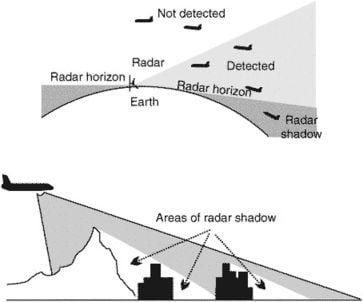 View graph showing the specificity of the radar horizon and the limitations of radars resulting from the globe (or the terrain).
View graph showing the specificity of the radar horizon and the limitations of radars resulting from the globe (or the terrain).- Business outside the Baltic.
While in the case of securing facilities on or on the Baltic Sea, aviation or land systems can indeed be helpful, in the case of naval expeditions, own ships are simply irreplaceable. In the meantime, remember how crucial it is not only to share military operations but besides to exercise with allies. any have large concerns about the fact that the US Navy or ships of another NATO states will not affect the Baltic due to the fear of the expected shallowness of this water. That fear could be solved in a very simple way. It would be adequate to show allies how to swim across the Baltic with the aid of operating their own ships, presenting acquired experience. In addition, sending your own ships to operations outside the Baltic (political tool/fleet harvesting) has the advantage that it helps train procedures and build relationships and trust between crews. It besides allows you to rip data exchange systems. In this way, in the event of a threat in the Baltic, the crews of Polish ships could "bring" allies into the waters and assist them in their operations on it (unless it has been rehearsed earlier, and after all NATO is practicing naval operations in the Baltic).
At the same time, having and utilizing our own ships as a political tool later makes it easier to get the support of allied fleets in places where our Navy would like not to operate (low priority). For example, the Norwegian Sea.
But the most crucial political issue about having a strong Navy is that It is impossible to build a Baltic safety zone, for example with Sweden without a strong own fleet. due to the fact that if we have nothing to offer the Swedes and they gotta “cover” us in the Baltic – then this kind of arrangement is unacceptable to the Stockholm authorities. A immense misunderstanding and inconsistency should be considered at the same time raising the request for a rapprochement of relations on the Stockholm-Warsaw line, while at the same time postulates the resignation of the strong Navy, which has units capable of operating with allies in various locations of the Baltic Sea. What is required is the autonomy of individuals (the anticipation of long voyages without calling to port, as well as the possible to operate at sea in hard weather conditions).
Bottom line. Poland needs the possible to control or deter any marine and aviation units, so that they avoid influencing/entering the Baltic Sea region, from which they could in any way endanger the interests of the Polish State.
The tool should be characterized primarily by advanced autonomy. Which means we request to be able to operate long at the selected emergency site even under adverse weather conditions. due to the fact that we want to build a safety strategy for all occasion, not just for good weather.
This tool should besides be risk-resistant, and thus have defensive systems that could last the enemy attack and effectively harm the enemy. Units which could easy be destroyed do not meet this criterion. The enemy would not have respect for them, so there would be no possible for deterrence. On the contrary, it is our (undefensible) individuals who would gotta avoid contact with the possible enemy.
The tool shall be capable of carrying out the following tasks:
Peacetime tasks:
- Patrolling and surveillance Marine routes, reflection of what where and erstwhile it floats (radar), ability to control vessels.
- Control airspace Over the Baltic, observing what, where and erstwhile years (radar) – deterring enemy aircraft from entering Polish airspace, including flights at low ceilings.
- Control and deterrence in deep water(sonar, chopper to ZOP).
- Demonstration of presence in the Baltic Sea and readiness to defend trade routes, transmission infrastructure (Baltic Pipe, SwePol Link) and strategical coastal facilities (LNG, oil, refineries, ports).
- Operations and exercises with allies and partners.
Defense tasks in the hybrid war:
- Protection of the coast, Polish territorial waters and maritime economical zones, as well as deterring unexpected, hidden approaches in their vicinity by hostiles:
- submarines,
- submarines, as well as:
- aircraft.
- Radioelectronic Fight (WRE), jamming enemy radio and satellite signals, obstructing the operation of enemy aircraft and ships close Polish maritime economical zones, Polish territorial waters and the Polish coast, which has an highly advanced possible for deterrence!
- Safeguarding supply of marine delicate natural materials (i.e. oil, gas, coal or electricity).
It follows from the above that Poland needs the following instruments to defend its own interests over the Baltic Sea, as well as to guarantee the safety of the maritime border and the infrastructure located on the coast:
- a strategy of situational awareness, i.e. above all:
- radar, which can detect and track the mark and, if necessary, mark weapons (both for maritime and air purposes),
- sonars, which can detect and mark underwater targets and mark weapons (torpedes) if necessary,
- additional support may be scout drones, which do not have radars and do not have the above mentioned capabilities, but are a inexpensive means that can be sent to a circumstantial place (in good weather), even if only to see if the ship will be sent,
- a deterrent system, i.e. effectors capable of destroying targets:
- aqueous, smaller (e.g. by parcel, which is simply a inexpensive means) and larger (with anti-ship missiles),
- air, rocket missiles, unmanned aircraft and manned aircraft,
- Underwater, including submarines, unmanned but besides seamines,
- a radio-electronic combat strategy capable of neutralising individual targets without physically attacking them, and capable of defending its own communication space from hostile interference.
It can already be concluded from the above that the instruments mentioned above will besides service during offensive activities during the hybrid war and will besides be essential during wartime activities. Thus, it is worth noting that air-sea combat systems besides have control and deterrence functions throughout the room, so they “make money” for almost the full life of usage (as opposed to, for example, a tank or a haubicoarmata).
Tasks for the MW during the war or the “hybrid war” (OFF)
In the case of the plan of war tasks for the Polish State concerning the maritime domain, it should be remembered that within these tasks there will be all those that we have listed in the context of time of peace and action stricte defensive. So, The possible of the Polish Armed Forces must safeguard defence needs and should besides let offensive actions. In particular, according to the principle, "the best defence is the attack" the opponent on which the force is exerted has little area for manoeuvre erstwhile it comes to the task of hitting the space we defend.
If the SZ of the Republic of Poland had acquired appropriate offensive capabilities that would have prevented the opponent from leaving their own ports into the open waters of the Baltic, then any consideration of the methods of defence of the Polish coast could have gone to a second stage. For example, the transport of delicate energy resources could take place about without obstacles, while the northern border of the country would be safe. Consequently, alternatively of assigning many land forces to defend the coast (in case of a landing) they could be utilized on the front. Where they would take part in a land battle, which, in our geographical conditions, determined the result of the war. In another words,, the protection of the coast with another dedicated tools (i.e. ships) could truly strengthen the Polish Army fighting on land. For alternatively of posting, for example, a full brigade mechanized to defend the coast (before landing)It could be utilized for what it was created for. Coastal surveillance – just in case – could then be entrusted to WOT forces.
Tasks for the Polish fleet for “W” time
Furthermore, if the native Navy had the possible to carry out offensive operations, then the benefits for the Land Army could be even greater. Imagine that the Polish fleet has the ability:
- to accomplish an advantage in the Baltic, to operate freely on it and to deter enemy units, and to:
- demonstrations (even before the war) of the anticipation of closing exits from hostile ports (e.g. from the Baltic in the Kaliningrad Oblast) by setting up an A2AD marine defence close specified ports, so that their own mine units could then set up a mine dam (without a shield can not be done),
- the dispatch of unmanned aircraft from decks of ships that could carry out reconnaissance and combat missions (target tracking), supporting ground forces (especially artillery rocket strikes),
- rocket strikes for land purposes (e.g. OK) from the Baltic Sea, both from the sea and from the air, which could increase the possible of an artillery-missile saturate attack besides carried out from land,
- cooperation with aviation, which would have an advantage over the aviation of the enemy, and thus Poland (through its interaction with F-35) would have the possible to dominate the air over the Baltic Sea, which would besides give operational and tactical freedom to plan air strikes on enemy territory from an additional direction,
- Special forces or sea drones shall be carried by sea to a selected location, including the rear of the opponent.
With this kind of possible Navy possible enemy alternatively of planning an air-sea impact on Polish maritime and coastal infrastructure facilities (and besides land-based infrastructure close to the coast) or even a sea landing, would gotta focus on defending its marine resources, as well as its own infrastructure. This in turn would force the opponent to invest in defensive systems, at the expense of offensive potential.
Imagine a situation in which the Russian Federation intends to execute an offensive operation from the territory of the Kaliningrad Oblast. The awareness that if Russian forces were moved from OK to the territory of Lithuania and Poland could encounter a counterattack in the form of an attack on the basis of operational forces would surely complicate the situation for Russian planners. For airports, fuel and ammunition retention facilities and another delicate centres could be attacked from almost all direction. This means that the Russian network of radars and anti-missile effects could easy be bypassed or overloaded (or even destroyed). In another words, alternatively of e.g. engaging land forces to endanger the Kaliningrad Oblast, e.g. from the territory of Lithuania, it would be much easier and cheaper to endanger by rocket-artillery-bombing from 3 directions (Lithuania, Poland, Baltic). Sending a rocket that will destruct e.g. warehouses would be no cost and failure compared to possible dense battles which would should be undertaken e.g. attacking the Kaliningrad Oblast a mechanized brigade or even a battalion. Meanwhile, the effect (the threat of OK and the instigation of Russians in defensive positions even before the war) could be the same.
Especially since the forces in the Kaliningrad Oblast would be in a situation besieged by a fortress on the first day of the war. Which would force the Russians to save and defender supplies of ammunition, fuel, spare parts and any another means essential to keep their own forces in combat readiness. It is only to get a ‘corritary’ from Belarus to Kaliningrad, which could be sent supplies would give the Russian side full freedom of action from OK territory.
Of course, 1 can rise the argument that land and air forces attacking from the territory of Poland can be utilized to destruct logistics facilities in Kaliningrad Oblast. However, one more time it should be stressed how crucial it is for rocket-bomb attack to be able to strike from an additional direction. For rocket systems have a limited scope of vision. Simplifyingly, they are arranged to observe 1 of the most endangered directions. Of course, you can deploy respective radars, but that raises the cost of defence that will be missing elsewhere. Having the ability to attack from the Baltic side, we not only force the opponent to dispose of additional valuable weapons systems, but besides save our own resources. With a safe coast we can engage little resources to defend ourselves, and, for example, allocate additional batteries of the NAREW strategy to defend land troops on the front. These are arguments that are seemingly only after knowing that The Navy is an component of the Armed Forces of Poland as a full defence system, and the corresponding fleet possible multiplies overall defence possible so at sea, but in air and on land.
Therefore, in view of the above, as mentioned above in the points of offensive capabilities of the Navy are those that the Armed Forces of Poland should have.
Naval possible during the war
There is very small sense of story in public space, according to which it is not worth investing in modern ships due to the fact that they will be destroyed in the first hours (and even seconds) of war. possibly inactive in the ports. You might as well say that it is not worth investing in land forces, due to the fact that soldiers and equipment will be eliminated in the first hr of war by stationing in barracks. Of course, this is complete nonsense.
The Ukrainian example shows that the threat of war - with modern means of designation - is seen long before aggression. After all, even in 1939 – erstwhile Gdynia War Port was practically on the border of the Second Poland – Poles had already withdrawn 3 destroyers to Britain before the outbreak of the war, which were prepared for war with the weak in the sea of the USSR, but there was no point in losing them against the powerful Kriegsmarine. On the another hand, all 5 Polish submarines left the port besides before the invasion and carried out the task of mining and actions against the enemy fleet. Then, in the face of bad news from the land front, all ships were ordered to retreat (Sweden, United Kingdom). The 3rd Reich, despite its effort to accomplish the surprise effect on 1 September 39’, an overwhelming advantage at sea and in the air, did not sink any Polish destroyer or submarine. small of that, besides another fleet units (like the countertorpedic ORP Wicher and the miners ORP Gryf) were prepared to defend and fight fiercely for the first 3 days of the war – under very unfavourable conditions.
Today, the surprise of the enemy fleet would be even little likely. At the same time, it should be remembered that the Baltic Fleet is not 1 of the rich in modern equipment or many years of experience in war activities – as in the case of US Navy Or even Royal Navy. This is an opponent for whom we can be tempted to neutralize or defeat. However, with the support of even a fewer NATO ships, the Russians would simply have no chance. This is an additional argument to make it rather inexpensive with even a limited number of modern ships so that the road to maintenance and more many Baltic Fleet cannot carry out its tasks during the war. In another words, to guarantee that all its possible remains untapped and falls behind in port, risking easy destruction.
This effect cannot be achieved without the usage of their own ships (which have anti-ship missiles and weapons against submarines). The enemy fleet will leave the port before the war, and the hazard of losing 1 or 2 obsolete ships would be a price that the Russians could pay in exchange for cutting off the full Polish state from access to energy resources. On the another hand, if the commanders of the Baltic Fleet were aware that on the advanced seas they would meet with a Polish squad of modern ships supported by aviation and the Marine Rocket Unit, then not only the demolition of the targets (i.e. the gas-port) would be difficult, but besides the costs of carrying out specified a task could be devastating. For there should be an air-sea conflict and a possible chase. With this kind of perspective, the Russian fleet may not be able to leave the Gulf of Gdańsk, or even the port in the Baltic Sea.
It is worth to find at this point the possible of the Navy, which would let not only to effectively defend the Polish coast, but besides to check out the Russian Federation (a scare distant time of peace and combat during war). Consequently, the fleet should have:
- sensors (radiators/solars) with the top possible scope and power capable of detecting and targeting from respective twelve to respective 100 air and sea purposes at once, and directing their own missiles to these targets, and above all besides missiles fired from another media (i.e. aircraft/land launchers),
- a communication and data exchange strategy integrated into a central strategy that besides operates aviation, artillery or land-based anti-aircraft defence,
- multi-layered anti-aircraft and anti-missile defence capable of zoning (and not only self-defence) against air assault (aircraft-missile) – guaranteeing opposition to attacks on the fleet itself, as well as region protection of the full Baltic direction,
- an arsenal of systems for combating submarines of different sizes and types, in peculiar anti-ship missiles,
- submarine detection and control systems,
- the possible for mines to establish a maritime blockade on the enemy port,
- Unmanned aircraft and unmanned submarines,
- the ability to transport peculiar forces by sea.
All of this would give the possible to make an inter-operable immune strategy of the state in the field of air-sea combat and even air-sea-land battles. Consequently, it would be possible to gain an air-sea advantage in the Baltic and to usage this water as its own flanking opponent. Additionally, the protection of the Polish maritime border would draw the work of maintaining forces on the coast, which would benefit much more on the east land front.
What tools?
In order to be able to carry out the tasks entrusted to the Navy (defensive, offensive, during peace and war) and to guarantee that it is suitable for their implementation, it is essential to guarantee that the SZ RP is provided with appropriate tools. The above-mentioned potentials can be obtained by means of various weapons and media systems. In another words, you can make different configurations of equipment that will let you to complete the task better or worse utilizing smaller or larger financial expenditure. However, in order to make the optimal and tailored model of the Navy for Polish needs, 1 simply needs to know which tool has what properties and what can be achieved with it. In another words, it is impossible without detailed method and military cognition to choose appropriate tools for MW. Paraphrased, a individual who does not know about car mechanics, does not have a chance to find the appropriate parameters of the vehicle suitable for e.g. participation in the rally. This individual will not choose the right parts, fold the vehicle or make the right settings. In fact, even a qualified expert cannot trust on his own knowledge. It must besides work with the practice – the driver. In addition, the choice of constructor/mechanics is limited in the context of financial opportunities that are imposed by the sponsor Teamu or its typical (e.g. the Financial Director). In another words, building a rally car is simply a consequence of the work of many people who sometimes specialize in completely different areas.
It is so so crucial that the form of the SZ of the Polish Republic is determined by people who have competence in this area. As regards the SZ of the Republic of Poland and the Navy, these people decided that in order to accomplish the optimal balance in the cost/effect relation with respect to the tasks entrusted to the Navy within the full safety strategy of the SZ of the Republic of Poland (and not only the cost/effect itself) it would be essential to get at least 3 multitasking frigates, as well as 3 submarines.
Why did you choose a different model of MW? I'll effort to explain it below.
Why Fregaty?
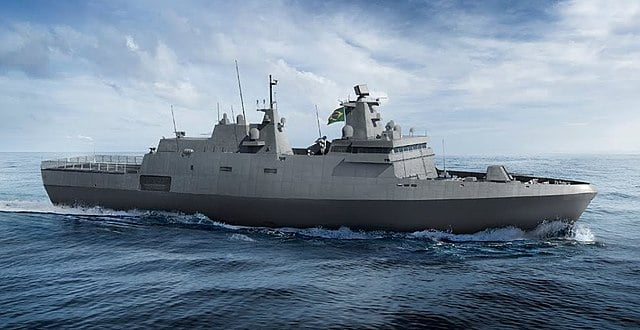
Previous sections of the survey describe examples of tasks that could not be effectively performed from land or air. Therefore, it is essential to have ships to carry out these tasks. At this point, we should ask ourselves, what individuals should they be? Big, multi-tasking, but more costly and little numerous? Is smaller, individually cheaper, but operating more?
You can halt here for a while to ask questions. Is it more crucial at sea to be outnumbered than this quality, and is it actually cheaper to invest in many smaller units trying to accomplish the same potential? In both cases, the answer is – NO.
First of all, it should be remembered that if we have a smaller hull with little buoyancy at our disposal, then we are limited in terms of the size of the systems installed on it. And so, tiny ships with a displacement of about 1-2 1000 tons do not mount large radar masts and powerful power of radio-electronic combat devices (which notabene require adequate power, i.e. large power units respectively). In another words, three, 4 or 5 tiny ships have no chance of achieving a akin possible in this area as 1 greater.
Furthermore, with a tiny platform, many systems cannot be placed on it at once. As a result, ships with low buoyancy are dedicated to circumstantial tasks. These are usually tasks of patrolling, combating submarines or submarines. tiny units, on the another hand, are poorly suited for detecting and combating aviation and rocket missiles, as it requires large and costly radar, as well as a place for many launchers of frequently costly anti-aircraft and anti-missile missiles.
As a result, smaller ships are simply more susceptible to rocket strikes carried out either by sea or from the air, and no longer have the possible to defend the area (i.e. not only self-defense but besides individuals next to or the full area). Thus, their anti-aircraft defence does not constitute a crucial strengthening of the possible of the full fleet of ships, and is no longer suitable, for example, for area protection against impact on close infrastructure. At the same time, tiny ships are easier and sometimes simply easy to sink. Especially for hostile aviation, which can approach very close to the mark (without fear of shooting down short-range systems), track it down and then launch anti-ship missiles. From here small ships should avoid operating in an environment in which the enemy has control in the air. Importantly, tiny ships do not have the possible to support their own aviation to accomplish specified dominance..
With limited rocket and air defence systems, smaller ships can in rule be compared to ‘one-off’. Almost all fire threatens to sink. The concept of utilizing tiny and low-cost rocket ships (i.e. ORP Lightning, ORP Thunder and ORP Orkan) was to make a inexpensive approach to the enemy fleet of larger ships and to launch a large amount of anti-ship missiles. The goal was to sink more valuable and larger units, and at the expense of which it was counted, the failure of tiny ships without defence.
The problem is that this kind of tactics arose at a time erstwhile ship's defence systems were inactive highly imperfect (as on the cruiser “Moscow”). Radars were able to track only a fewer approaching targets at once, and rocket launchers could track and harm just 1 mark at a time. In another words, a ship that had even respective defence systems could have been electrocuted in the attack of several-several missiles. But times have changed. Today, modern radars can detect and track up to 1,000 targets at erstwhile at the same time, and anti-missile systems can track and harm up to 60-80 targets at the same time. While the erstwhile limit was the technology of targeting and targeting, now the limit is determined by the number of missiles that the ship takes with it. And here math is simple. The bigger the ship, the more capacity. The greater the load, the more missiles and defence systems. All thanks to the revolution in many areas of technology. Paraphrased, the Navy from analogue technology entered digital.
Polish Swordfish will have 32 anti-aircraft and anti-missile missiles (16 Strike and 16 Tactical type). There are 4 specified rockets in the CAMM rocket chambers. This means that even if we do not burden all 32 launchers with OP missiles, the frigate will inactive have no little than 64 missiles intended to fire air targets (airplanes or rockets), although this quantity may be higher. In addition, the Swordsmen will have 3 automatic cannons capable of harming air targets (including rockets) from the nearest distance, which in defence will be the last rescue plank. At the same time, the platform itself will be large adequate (stock in terms of buoyancy) that it will have the possible to modernise. In another words, it will be possible to equip the unit with, for example, laser or microwave defence systems, which are presently being tested in terms of combating rocket and drones.
Meanwhile, tiny rocket ships with anti-ship launchers usually have from 4-8 launchers (more than that, either not fit or not pay to place specified costly weapons on specified a tiny and weak, easy sunk ship). In another words, even 10 tiny rocket ships may not be adequate possible to break the defence of 1 modern frigate. And these never swim alone, just in teams. However, if we support and send e.g. 45 specified tiny ships (it is worth remembering the horrendous costs of building specified a numerous, one-time team!) in order to sink 3 frigates, it is crucial to note that this many fleet can be sunk all before the fight. For example, by hostile aircraft or by hostile, larger ships that will mark faster (better radar operating from higher masts, vide radar horizon)...
Thus, in order to support the attack of specified a immense team, he should be protected by anti-aircraft, anti-missile, and besides against submarines. specified an experimentation could not last a large naval budget. so US Navy, Royal Navy or even the nipponese Marine defence Forces put on universality and quality alternatively than quantity. Especially since in their case the autonomy of ships is besides highly important.
However, besides in the case of Poland, it is worth having ships that will be able to go to sea during bad weather conditions and stay there for example a fewer days. This requires not only a larger and more robust hull. Autonomy besides depends on the appropriate accommodation conditions for the crew, but besides the capacity of retention facilities. For example, food and ammunition and fuel. The larger ship has the possible for longer participation in the battle, and even after respective attacks it can hold the ability to fight further. In the meantime, smaller units must immediately return to safety (most frequently to port) to overload their weapons and regain their combat capability after 1 attack. It is worth mentioning that at this time (return) they are usually completely defenseless and vulnerable.
Potential and universality
To illustrate an example of the force of a frigate-class ship, it is worth presenting which weapon set it can take aboard (taking into account the announcements of our MON):
- radar equipment, 3D radars with a scope of, for example, 400 km, as well as sonars,
- radio-electronic combat equipment (interruptment of enemy ships and aircraft, including drones — WRE),
- the combat management strategy [the sword],
- vertical rocket launchers (MRAD) and short scope (SHORAD) in the quantity of 32 units, [The sword will be equipped with CAMM-ER missiles up to 45 km (SHORAD)],
- very short scope anti-aircraft rocket launchers (VSHORAD) in a quantity of 2-4, with a scope of up to 12-20 km [The sword alternatively of the more costly RAM shells is to have a cheaper and more versatile CAMM with a scope of up to 25 km],
- Onboard cannon 76 mm or 127 mm, capable of damaging air, sea and land targets [The sword will have 1 cannon of coal. 76 mm],
- low-caliber anti-racite cannons (CIWS) [The weapon will have 2 35 mm caliber cannons with programmable ammunition that will replace the CIWS while being multifunctional]
- optional laser and microwave weapons(anti-drone),
- helicopter for the control of submarines (ZOP) — landing ground + hangar [Meter],
- two or 4 quadruple anti-ship rocket launchers (x8 or x16) [Meaner],
- anti-ship torpedo launchers [Meaner – 2 double ZOP launchers (x4)]
- additional cabins for carrying peculiar forces troops [Meter],
- submarine deck [b.d.]
- Passive defence systems, various types of decoys, dipoles, and another torpedo mistaking systems and anti-ship missiles.
To be certain of hits (not writing about sinking) of a ship like the Sword, a possible saturatory impact of the opponent would have to:
- overload the active rocket defence system, so number over 100 missiles per ship, so that it does not have adequate of its own defence missiles, and so that it can break through the barrel artillery,
- be resistant to jamming generated by the radio-electronic combat system, so hostile radar tracking and subsequent rocket guidance would should be technologically capable of breaking through the ship's WRE, in order to detect it at all, track it and point it at it,
- be sufficiently precise and technologically advanced to separate the right mark from the various types of lures or dipoles deployed and hit the right target.
It is worth noting that the Russian Federation would have a problem with the implementation of all 3 challenges described above. For firing hundreds of missiles at erstwhile requires multiple platforms (launchers, aircraft, ships) concentrated in 1 place. In addition, to carry out a saturate attack (missiles are expected to hit the mark at 1 time), the request for a central battlefield strategy that will let various platforms to launch weapons at the right time (Russians do not have it).
Furthermore, the Russian Federation would gotta have the ability to radar mark detection and tracking in real time and mark missiles (transmitting radar data to the rocket launcher). Russian possible in this respect is highly doubtful. The Russians do not have a network of radar satellites (which are on average suitable for direct guidance of missiles), their fleet of radar designation aircraft is simply a flying museum in the process of modernization of electronics, and radar launchers have limitations in the form of a radar horizon (limiting visibility to circa 50 km) and dead zones. At the same time, Russian radar technology is very susceptible to modern jamming measures, which applies to aircraft as well as ships or land radars. As a result, the story that the Russians would be willing to sink specified a equipped ship in 15 seconds or even minutes should be qualified for complete nonsense. The Russians would like us to think that they have specified potential, but their technology and capabilities are highly inadequate at all possible level. From detection, tracking to targeting, as well as the ability to launch specified a large saturatory attack. As regards its organisation (no management and data transmission systems) and the accumulation of platforms ready to launch adequate missiles to breach the defence of the full fleet of ships (e.g. 3 frigates).
The possible of the frigate itself, method issues related to the defence of specified ships, and topics concerning the capabilities of the Russians are described in another text: "POLISH ARMY 2030 – CZ.II Analysis".
Best-suited
To sum up, if Poland intends to effectively defend its interests in the Baltic Sea, to have the possible to defend the coast, and to dominate the enemy on this aquano, it will be essential to have an adequate strong Navy. The Navy, which will have ships with possible to operate nearby, but besides further from the Polish coast. specified as will enable enemy ships and aircraft from the Baltic Sea to be dispelled and aid to accomplish air dominance of their own aviation.
The frigate class ships are the smallest units that let to build multi-layered air defense, and located about 40-50 km from their own shores let to make depth. So that the opponent could not secretly approach the Polish coast so as to endanger the attack on critical infrastructure from close range. The frigates have the possible to multiply the possible of their own land-based anti-ship rocket launchers (by extending radar vision, allowing MJR to attack beyond the radar horizon). At the same time, they can dispel the enemy far adequate so that their own aviation and reconnaissance aircraft (AWACS, if we get specified aircraft) operate closer to the Baltic Sea or in the air above it. In turn, it strengthens the deterrence of enemy water units. A combination of potentials: The Sword+F35+Morska Rocket Unit would offer immense opportunities. The ship would be liable for air defense, radio-electronic combat, deterring enemy submarines and submarines. The landing POKR rocket launchers would reenforce the deterrence of the submarines, and the F-35 operating at a higher ceiling could dominate in the air, endanger the submarines, as well as from a much longer distance than the ship's radar, see targets flying low (or floating) below the radar horizon. With modern data exchange systems, the F-35 could supply targets for the ship's or Marine Rocket Unit's weapons.
It is besides highly crucial to deter enemy submarines, which could approach the Polish coast secretly, and to mine crucial routes, or attacks on ships, or make rocket strikes at targets on shore or even deep on land. Here the ZOP helicopters operating from the frigate have quite a few area to show off.
At the same time, the frigate squad deployed on the advanced seas assumes the function of the main mark for the enemy fleet and aviation. alternatively of hitting the still, easy-to-hit and very costly and crucial infrastructure for the operation of the full state, they must focus on trying to destruct Polish ships, which are not only defenceless but besides dangerous. It should be considered whether it is better to hazard a ship worth PLN 3 billion, which is simply a very difficult, moving mark for Russians, or whether we want to hazard much more valuable objects (such as gas/naphth ports) whose demolition will have far more serious consequences for the state, society and defence of the country.
The large and harmful story is that frigates are an easy mark that can be destroyed at a inexpensive cost (a rocket or even a drone). It is rather the opposite, frigates are frequently the most hard to hit and sink ships in many fleets – due to the fact that they have many self-defence and frequently region defence systems. So they are besides utilized to escort and defend larger units.
In the Baltic Sea conditions, Swords can besides be an excellent offensive tool that will exert force on Kaliningrad Oblast from the sea side. Thanks to advanced autonomy and good armament, frigates can form part of the blockade of Russian sea ports (supported by aviation, submarines and the Marine Rocket Unit from the mainland). This is entirely possible, due to the fact that just as Polish radars deployed on the shore, so Russian radar horizons are limited. It would be hard for the Russians to control what is happening about 50 km from the shoreline. Unless they sent ships to a full sea or a plane. This, however, would entail the hazard of losing individuals in the fight against a much better armed and technologically superior opponent.
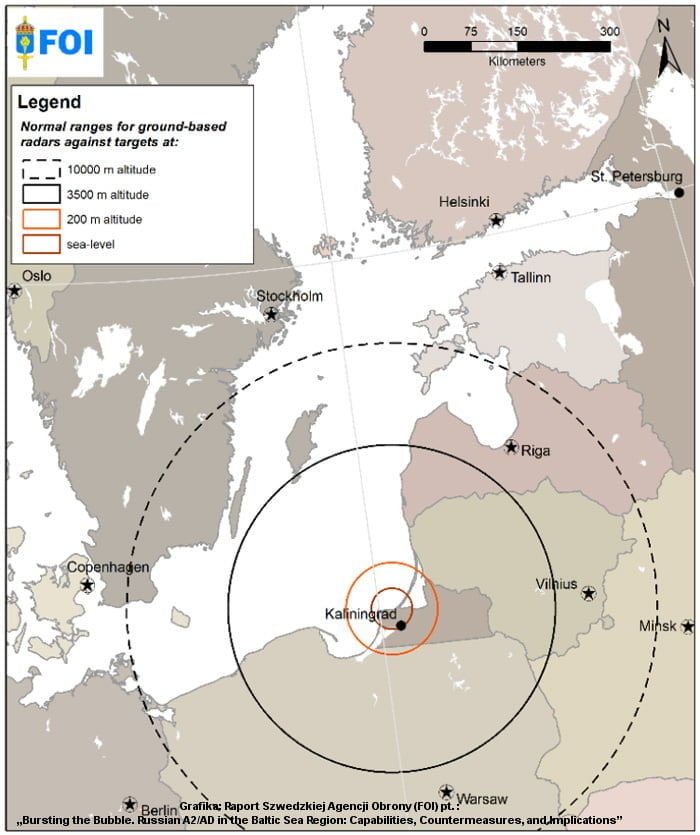 Graf. shows the (red) scope of land radar in Kaliningrad for the detection of vessels (sea level). As you can see, this is not an awesome “bubble”.
Graf. shows the (red) scope of land radar in Kaliningrad for the detection of vessels (sea level). As you can see, this is not an awesome “bubble”.At the same time, ships with more autonomy cannot be replaced by cheaper means. In bad weather, neither drones, nor smaller ships, nor even aircraft, can take on missions (for example, the aircraft can scope a advanced ceiling, but is then seen by enemy radar and is an easy target). The suspension of aerostats with radars does not solve the substance either, as they are besides an easy discernible and defenseless target. The first strike of the attacker usually starts with blinding and deafening the defender. In another words, the first missiles and bombs frequently fall on radar, listening stations, etc. So in 1 minute of war the Polish coast would be without eyes.
Unmanned aircraft are besides useful on the 1 hand (to look at a possible mark at close scope – during area time), but on the another hand they do not have radars (these are dense equipment). So the drone can only see what's within its scope of optical sensors and at the same time has no ability to guide missiles. It only transmits the image itself.
Radar reconnaissance aircraft – AWACS (even unmanned aircraft, if specified aircraft were to appear in the future) must fly advanced to see better. For it is the sense of lifting the radar up to offset the origin of the globe and to see further, below the radar horizon of the ground stations. The higher the plane with the radar rises, the further it sees, but on the another hand, it itself is visible from a greater distance. So in order not to be afraid to shoot down specified a machine, it is essential to push out enemy anti-aircraft systems (both fighters and ships – erstwhile it comes to the Baltic). In this context, a ship with a good OPL should be kept as far distant as possible from shore. Unless we want to invest in 150 fighters, which would gotta patrol the Polish sky on the coast or the Baltic. This second option is 1 of the most costly – both in creation and maintenance (fuel, service, weapons).
What's with the submarines?
The acquisition of submarines (Orka Program) besides has a solid basis for acquiring the right capabilities for the Navy, i.e. Poland. Your full immune system. The most crucial ability that submarines possess, and which they cannot execute of any another kind of unit, is the anticipation of a hidden approach under the enemy or close his defensive zone. The submarine can thus carry out a reconnaissance (sonare or even optically – through a periscope), attack an enemy submarine, mine a given seawater section (e.g. exiting an enemy port), carry out a secret operation by dropping divers, peculiar forces or submarine into a circumstantial area, or launch missiles for land purposes. In fresh times, technology has emerged that allows specified rocket missiles to be launched from the torpedo launcher. In effect, the construction of a submarine with specified capacity does not, in principle, disagree from the construction of a conventional hunting vessel. In another words, possibly in the Orka Program Poland will no longer gotta face a dilemma: cheaper but without the ability to hit land, or more costly with this possibility. You will be able to choose cheaper and with more potential.
Submarine ships are units that have considerable possible to deter an enemy fleet. This cannot operate in the advanced seas without the shielding of units intended to fight OP. So if our fleet has submarines, then the enemy must bear the cost of putting up or maintaining the ability to fight these ships. At the same time, submarines – thanks to the anticipation of a hidden approach and operating freedom – can make uncertainty on the side of the opponent. This 1 can never be certain where our individuals are. In order to detect them, extended search should be carried out utilizing many (air and sea) units. Of course, on large waters, i.e. oceans, it is like looking for a needle in a haystack. In the Baltic, chances of detecting OPs are greater, but the conditions of the Baltic Sea in terms of irregular bottoms let escape from enemy sight, at least in certain areas.
 Legend has it that the boughs and furrows at the bottom of the Baltic Sea were formed by shuffled kelem by powerful American ships
Legend has it that the boughs and furrows at the bottom of the Baltic Sea were formed by shuffled kelem by powerful American ships As the geological map below shows, the Baltic Sea has its depths, which are perfect for operating submarines. From the position of Poland, it is essential to cooperate with the Danish and Swedes in controlling the Bornholm depths (defensive tasks), while it is possible to usage the Gdańsk Depth to approach and effort to mine approaches to the Baltic port or to control the shipping routes to the port of Kaliningrad.
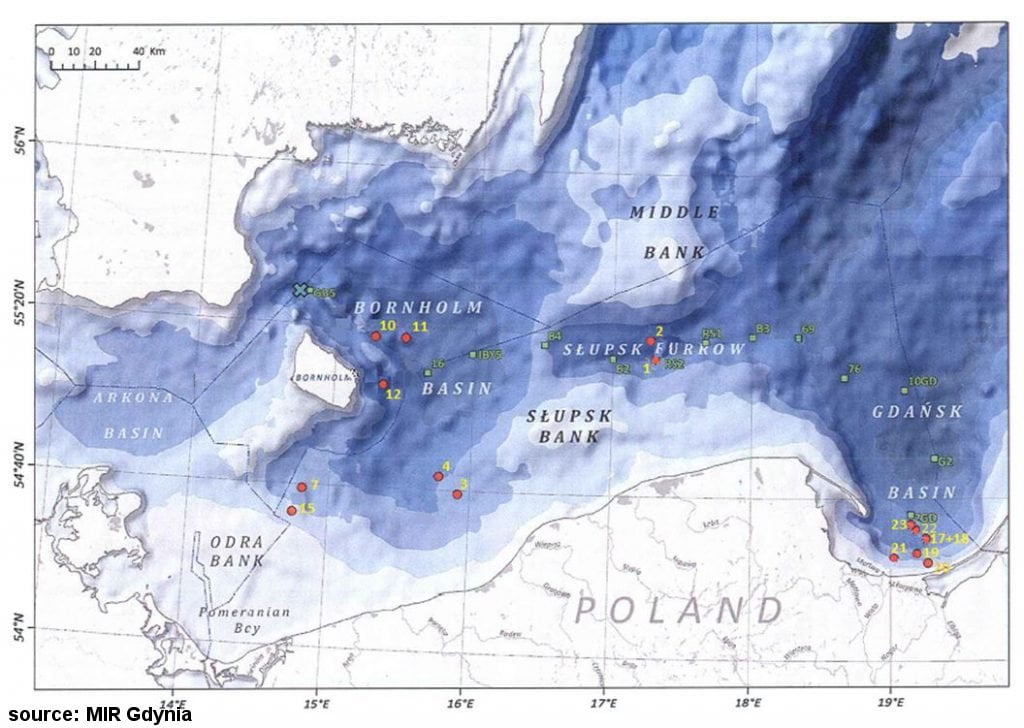
An costly fleet?
In the discussion on arms programs concerning the improvement of the Navy, there is frequently an argument that the fleet should not be a precedence for the Armed Forces of the Republic of Poland. And you know what? It's not. Since it is not and should not, then theoretically, the MON should not spend much of its budget on the Navy. And you know what? He's not. The Navy remained virtually without backing for 30 years. It was adequate to keep old crypts, and most of the “new” ships that were sent to the service of the 3rd Republic were old, utilized and donated for free or half-gifted ships. An example is 5 old Kobben-type submarines transmitted by Norway for the Navy from 2002 to 2004 (one of them intended for part). All historical units have already been withdrawn from service (2021). Our 2 only frigates Oliver Hazzard Perry (St. OHP) received from Americans in 2000 and 2002. Of the 2 possessions of Korwet, 1 comes from the PRL (ORP Kashub) and 1 is de facto patrol vessel (Sleep). ORP Ślązak is an example of 1 of the fewer investments in MW by 3rd Poland. All 3 Orkan-type rocket ships were launched from 1992 to 1995, and their construction was contracted or planned in the PRL. The last remaining "life" submarine of kind Kilo (ORP Eagle) has served in the MW since 1986. Our trawlers (17 pcs) and transport ships (5 pcs) are besides PRL children launched mostly during systemic transformation between 1988 and 1991. Radio-electronic designation ships (2pcs) are monuments from 1975-1976. Like hydrographic and school ships.
Thus, the III Republic of Poland was bornde facto only in 4 ships: 1 Slazak patrol ship (resigned to service after long adventures at the shipyard in 2019) and 3 Kormoran mine destroyers (built between 2017 and 2020). For almost 30 years Poland has spent about PLN 2.5 billion to buy fresh ships (1.1 billion on Slazak and about 1.4 billion on 3 Cormorans). Comparing this to the last ‘normal’ financial year, onlyoneThe 2019 MON budget was nearly PLN 45 billion. For the modernisation of the Polish SZ alone, PLN 12.5 billion was allocated from this budget. This is 1 year's data. If the above mentioned ships were contracted in 2019, the investment cost would be 20% of the funds allocated to the modernization of the full Polish Armed Forces and 5% of the full MON budget. But if we spread it for 28-30 years...
Suffice to say that during all these years the Navy received a fewer 100 million zlotys per year to support it. For example, in 2019, we spent the full PLN 670 million to keep the Navy. This is little than 1.5% of the full MON budget. The situation was akin and even worse in erstwhile years.
Therefore, if individual claims that the Navy is the most costly kind of armed force, they simply have no thought what they're talking about. Yes, it is in the case of a sea hegemon, which is the United States. However, Poland does not request aircraft carriers, cruisers, atomic submarines, destroyers, marine aviation or Marines (as US Marines).
The Polish state needs protection of 440 km of sea border, coast, as well as the possible to close in its own Baltic Fleet ports. We request a fewer frigates, conventional submarines and smaller mines, as well as air support from the Air Force and the Marine Rocket Unit.
Since we already own MJR, F-35 aircraft have been ordered, and mine destroyers are floating, we inactive have investment in multi-tasking ships (such as frigates) and submarines. Let's look at the cost. The Sword Program (3 frigates) was valued at PLN 10 billion. Add 20% to this (inflation, unexpected costs) and we will close to PLN 12 billion. The Sword Program is to be implemented by 2034. The first ship should have been launched in 2025. So we can presume that by then the programme will cost about 1 billion a year. If we had assumed that from 2019 the level of MON's funds for modernisation would not have increased (and a large increase is planned), building a frigate would have cost us 8% of these funds and just over 2% of the full MON budget. However, it was not until 2028 that the first swordfish was actually put into service, so the costs would be even more distributed. All 3 ships are to power the MW by 2034. It's 12 years with a full of PLN 12 billion...
If individual inactive claims that it is not appropriate to allocate specified a trace amount of resources to the possible of a squad of 3 ships able to defend the full northern border of Poland, then it should compare these costs with e.g. the cost of purchasing 1 Narew battery, which is estimated at PLN 1.5-2 billion for 6 launchers (+ radars, command cars etc). The modern frigate has more anti-aircraft possible than 1 battery, higher mobility, better radars, and it besides provides a platform for a number of another systems (anti-ship missiles, cannons, sonars, sys. WRE, chopper landing ground ZOP, etc.). Counting further, 2 squadrons of the Marine Rocket Unit (a full of 12 launchers) cost another PLN 1.6 billion. As a result, the costs of creating the Narew + MJR division alone are already comparable to the costs of 1 frigate Swordfish. With a separate acquisition of all the systems placed on the frigate, specified an investment would be much more expensive. Does this mean that alternatively of MJR, you had to buy frigates? Of course not. Both systems have their strengths and weaknesses. Land launchers have limited impact potential, but may stay hidden until the missiles are launched (after which they must change position and reload the launchers immediately after the release). Thus, they supply excellent, additional support to the defence of the coast, but they cannot service the tasks to be carried out at sea. At the same time, anti-aircraft defence is required, especially as their radars "light" precisely as the anti-aircraft radars do. In another words, if MJR radars are working, then the opponent can easy track their location and destruct during the SEAD mission (Suppression of Enemy Air Defence) anti-radar missiles or bomb-missile shelling. Which makes it all the easier that anti-ship rocket launchers can only work erstwhile they're standing still. This makes it easier to “catch” them. Meanwhile, the ship is usually a moving mark whose hit requires excellent detection techniques, real-time tracking of the mark and simultaneous tracking of the missile. Meanwhile, in these technologies, for example, the Russians have many limitations and weaknesses.
The separate programme is to acquisition fresh submarines in 3 units. This investment is besides to be implemented until 2034. Which means 12 years from now. Assuming a truly large mountain, both programs (Motor + Orka) will cost us an average of PLN 2 billion per year for 12 years. This is 4% of the MON budget only from 2019 (when we allocated 2% of GDP to the army), and it should be remembered that since 2023 Poland can allocate up to 3% of GDP to the armed forces. Expenditure on the Navy – taking into account the investments described above – will be a drop in the MON's budget sea.
Fear to think of the possible of the Navy if we spent at least 10% of the MON budget on it in fresh and future years. However, the proportion of 1/10 funds for this intent does not seem at all excessive, and no one, at specified a level of funding, could blame the fetishization of the Navy.
Why do we request the Navy? – Summary
As indicated at the beginning of the study, the interests of Poland in the Baltic Sea are increasing year by year. In the face of a full-scale invasion of Ukraine and the cut-off of Russian gas and oil supply, the energy safety of the 3rd Republic will even hang on maritime and coastal infrastructure. Gas pipelines, power lines, drilling platforms, wind farms, kerosene- and gas-ports, container hubs, gas and oil retention facilities and in future atomic power plant. Faced with the turn of cocks on pipelines from Russia,The Baltic is our most crucial direction in the field of energy security.
In addition, expanding volumes in port handling are expected. Finally, for a time of war, allied support can scope through seaports. For maritime transport can be the most efficient, and in any cases (like dense equipment from the US) is the only possible.
In the opinion of the author of this study, the request from the SZ RP for 3 frigates and 3 submarines is simply a minimum request for present (or alternatively yesterday). In the face of the upcoming geopolitical changes in our region (but besides in the world), the Navy will require further investment. The construction of the 3 Swordsmen is the beginning, and even the continuation of the program and the construction of up to a twelve fresh ships by 2050 is to be expected.
However, not so far into the future, it should be stressed that real capabilities at sea translate into strengthening the Land Force. due to the fact that these, alternatively of assigning the full brigades to defend the coast in the event of a landing, will be able to redirect all forces, resources and attention to the key to possible land conflict directions. In this respect, the investment in the Swords and the Ork programme is fundamentally equivalent to at least 1 mechanised brigade, which will actually strengthen the remaining front forces on land. In another words, By investing in the Navy, we not only build capabilities on the Baltic Sea, we safe the maritime infrastructure and on the coast, but even increase the strength of the Land Forces.
At the same time, thanks to the improvement of the fleet, Poland and its Armed Forces in Poland will not only be better prepared to defend the country's maritime border, but will besides gain offensive potential. The Navy will besides become a full-fledged political tool to facilitate talks and negotiations with the Scandinavians. For reasoning about the improvement of the army should not close to a drawer with the word “war”. In the context of events in Ukraine, the war of Poland is not imminent. On the another hand, it is highly likely that Russia will weaken so much that it will collapse internally. And it won't be a large threat in 10 years. It is for this reason that the Armed Forces of Poland (including the Navy) should be prepared. Our army must have an expeditional possible and be a real political tool. Be a warrant of safety for the weaker countries of the region.
To present your presence, strength, as well as calming allies, the easiest usage of fleets, aviation and air-desanant troops – which can be easily, rapidly and cheaply transferred to a given country. Just as the U.S. did after the invasion of Ukraine, sending the 82nd Air Desert Division to Poland.
At the same time, it should be remembered that it is our work to get military potential, which will let us to make a hostage from Kaliningrad Oblast. Imagine the possible of the Armed Forces of Poland, consisting of a massive rocket attack on targets in Kaliningrad Oblast from the mainland (e.g. 3 HIMARS batteries), air (F-35 and F-16 + JASSM ER) and sea (Fregates + OP + smaller rocket ships). With specified possible Kaliningrad becomes a political hostage, and the Russians begin to calculate or alternatively of deploying costly and dangerous systems for Poland – do not escape them from the threatened area. This applies, among another things, to ships, costly rocket systems, but besides to aviation, which would possibly should be searched inland. This would thus reduce the threat to the Polish fleet and make it even easier for it to gain an advantage in the Baltic areas that are crucial to us.
This is how the improvement of the Navy should be seen. Treat it as part of a comprehensive safety system. Armed forces as 1 co-playing potential, not as separate independent land forces, navy, aviation, cyber, etc. The combined possible in all these domains far outweighs the combined capabilities of each kind of armed force separately.
In this context, information that MF and MON are of the opinion that Poland can afford modern Navy calm down. The decision to by 2035 spend 60 billion PLN for fresh warships must be considered appropriate (as if only 1 of the 15 future "old" arms budgets were allocated to the MW, with spending 2% of GDP). It can already be seen that modernisation of the MW will not take place at the expense of more precedence programmes, due to the fact that many of them – like NAREW – have already been pushed to implement. PLN 60 billion seems a large amount and adequate for the complete exchange of all obsolete MW units. It is worth remembering, however, that this will be spread over 15 years, which gives an average of PLN 4 billion for the modernization of the navy per year. This will truly change a lot in the MW, but it should not reduce the possible of another forces.
At the same time, callback that in the face of the collapse in the Russian fleet, it would be unwise not to take advantage of the chance to get a comparatively inexpensive advantage in the Baltic Sea and safe the full northern border of the country with the delicate infrastructure located there. That's the asymmetry. If the opponent has a weakness (e.g. in the fleet and in the reconnaissance), then this weakness should be exploited, alternatively than given the field to him in specified a way that he can afford the cheapest possible cost (with the aid of an open-air museum called the Baltic Fleet) to get tremendous opportunities to act and endanger the state from a given direction and in circumstantial areas (water/air). If the opponent has besides many and large Armed Forces to upgrade them all, then 1 should be betting on weaponry in advanced technology, which gives possible sometimes even cost-free (no failure of own) demolition of enemy units.
Krzysztof Wojchal
geopolitics, politics, economy, law, taxes – blog
P.S. NOTE!
If you liked the text and consider it interesting and valuable information, and you are besides of the opinion that it is worth spreading content that will let to advance cognition and awareness in society about the Armed Forces of Poland (including the Navy) – make the text available further. This is highly crucial especially in the current geopolitical situation (war in Ukraine) and in the context of the spreading, SCHOOLLY myths about the fact that Poland (despite its dependence on the Baltic Sea) does not request a fleet! Let us fight the harmful communicative for Poland.



